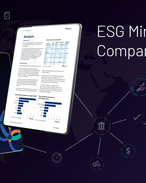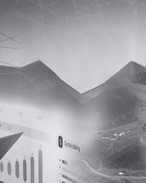CAPITAL MARKETS
Records tumble for WA lithium, cobalt and salt sales
WA resource sector revenue soars, while iron ore production reaches new high
The state posted its highest ever sales from resources of A$246 billion for the year, a rise of $15 billion, and added a record 117,970 full-time equivalent jobs thanks to the mining investment boom and freer access to labour from outside the state.
Statistics released from the Department of Mines, Industry Regulation and Safety this morning show there's more growth to come with over $60 billion in projects committed for development or under construction.
While iron ore, traditionally the state's single largest export, was hit by weaker prices, DMIRS data shows sales were still historically strong at $126 billion, off from $137 billion the year before.
That was despite production hitting a record 855 million tonnes, as big expansions and smaller players entered the market.
The fall in the value of iron ore sales was exceeded by growth in the petroleum and lithium sectors amid surging prices.
The state, which is keen to avoid a case of "Dutch disease" and an over-reliance on Chinese demand for iron ore, delivered a record $16.3 billion in sales of spodumene concentrate, a six-fold increase in sales into the lithium market since 2021 as demand for batteries globally continues to skyrocket.
The state is already the largest provider of hard rock lithium globally, and has more recently moved downstream into lithium chemicals.
There is a chance lithium could soon overtake gold as the second most important metal, with gold sales at around $17.8 billion, with the highest level of production since the mid-1990s and record Australian dollar prices.
Other key exports including alumina delivered sales of $6.9 billion and nickel at $5.7 billion, the highest level in 15 years.
Other key commodities included mineral sands ($1.3 billion), rare earths ($797 million), salt (a record $625 million), cobalt (a record $528 million), zinc ($326 million), coal ($314 million) and manganese ($273 million).
In the energy space, high global prices and local production translated into record LNG production valued at $51 billion, a doubling from 2021.
Sales of liquid petroleum totalled $15 billion.
The resources sector's record revenues were also assisted by an overall weaker Australian dollar.
The next generation of mines requires exploration, and the state attracted more dollars in 2022 with a record breaking $2.54 billion, about 63% of the national spend.
Attracting large chunks of investment was the critical metals space, with $293 million spent searching for lithium and rare earth elements, $267 million for nickel-cobalt, and $195 million for copper.
Overall investment in resources was $26 billion, with the state recording 14 continuous quarters of increased investment spending.

Mining Company ESG Index: Benchmarking the Future of Sustainable Mining
The Mining Company ESG Index report provides an in-depth evaluation of ESG performance of 61 of the world's largest mining companies. Using a robust framework, it assesses each company across 9 meticulously weighted indicators within 6 essential pillars.

Mining Journal Intelligence Global Leadership Report 2024: Net Zero
Gain insights into decarbonisation trends and strategies from interviews with 20+ top mining executives and experts plus an industrywide survey.

Mining Journal Intelligence Project Pipeline Handbook 2024
View our 50 top mining projects, handpicked using a unique, objective selection process from a database of 450+ global assets.

MiningNews.net Research Report 2024
Access a multi-pronged tool to identify critical risks and opportunities in Australia’s mining industry.





















